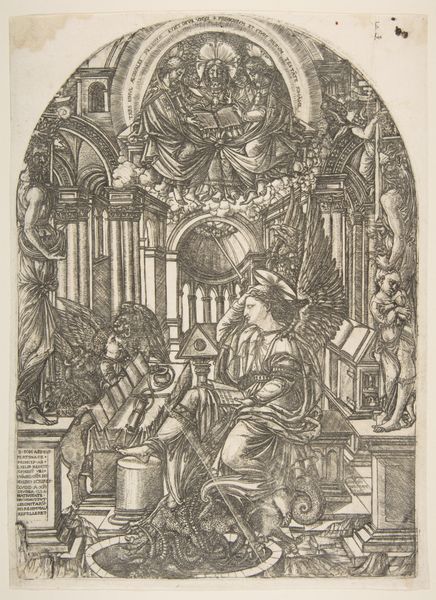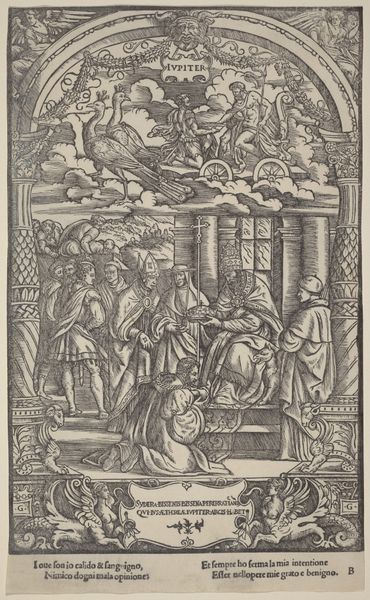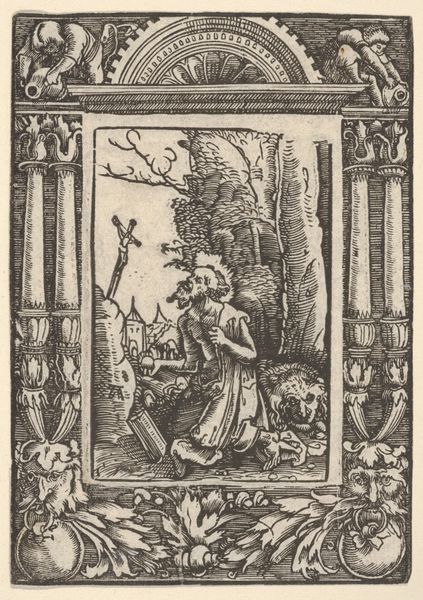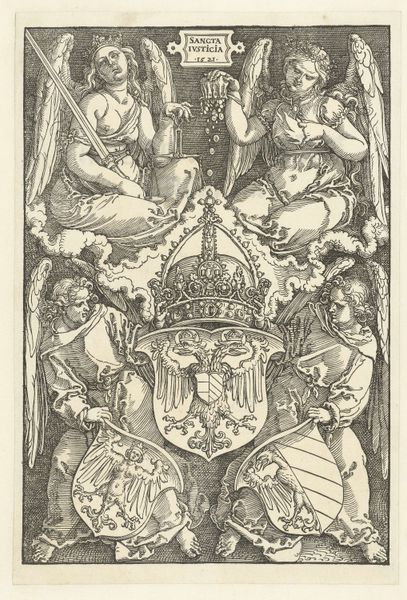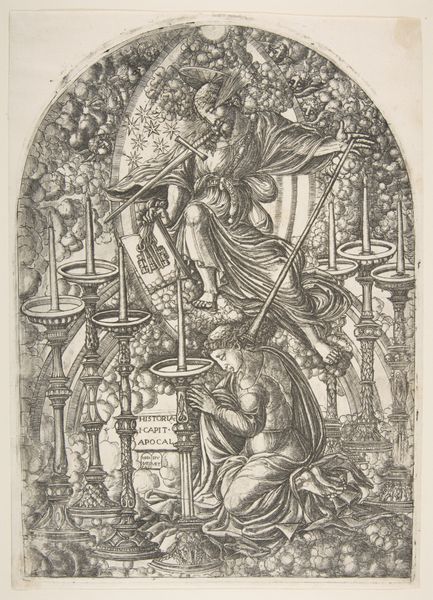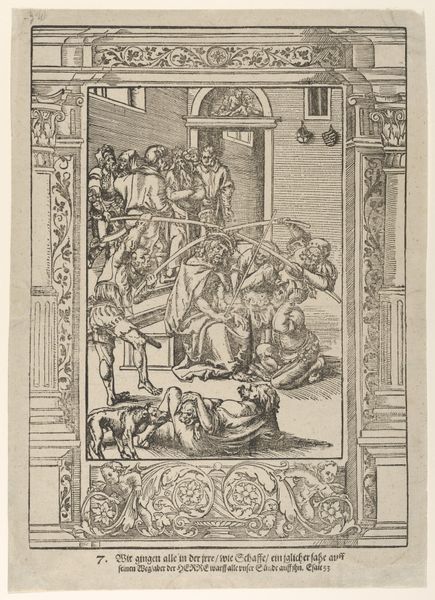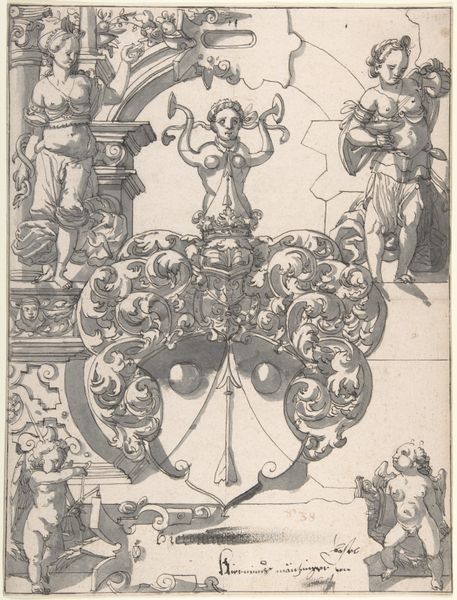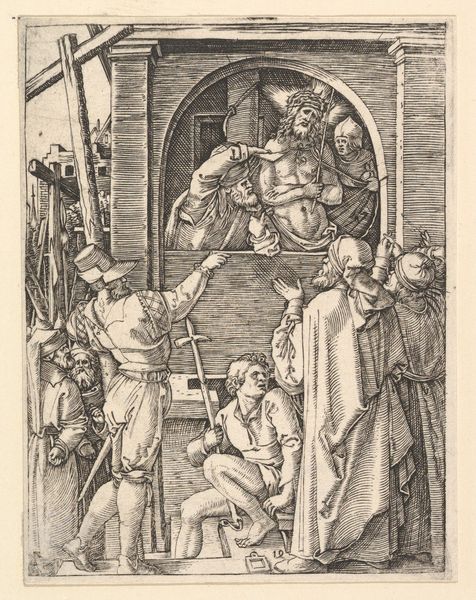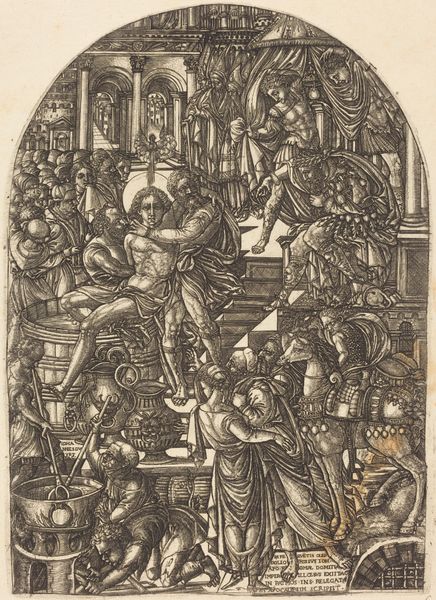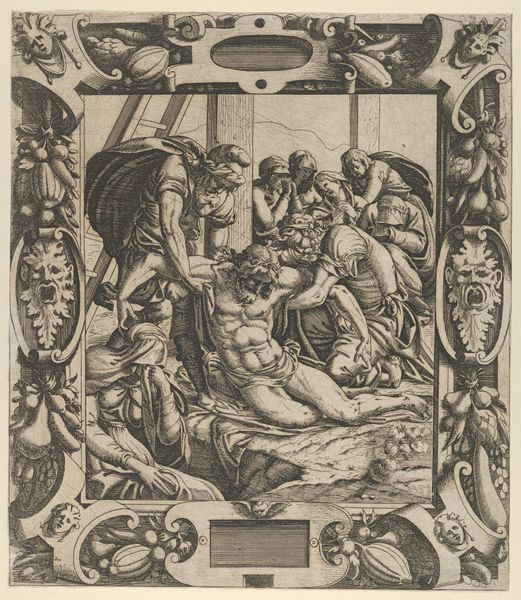
drawing, print, engraving
#
drawing
#
allegory
# print
#
figuration
#
11_renaissance
#
line
#
history-painting
#
northern-renaissance
#
engraving
Copyright: National Gallery of Art: CC0 1.0
Editor: Here we have Jean Duvet's engraving, "The Revelation of Saint John the Evangelist," from around 1555. The detail is just incredible, a really dense composition. It almost feels overwhelming, like a fever dream. What strikes you most when you look at this? Curator: The immediate thing that jumps out is the fusion of sacred narrative and explicit political messaging, something quite common in the Northern Renaissance. Duvet is not merely illustrating the Book of Revelation; he’s engaging with contemporary religious and political anxieties. How does the imagery here connect, do you think, with the societal turmoil of the time? Editor: I guess the presence of Saint John indicates a biblical inspiration. What else contributes to that atmosphere of turmoil and, perhaps, prophecy? Curator: Consider the architecture, resembling a stage – almost like a theatre – combined with these monstrous figures at the base. Then look up: God is looking right back, as an audience. Now consider Duvet himself. Was he reflecting established religious perspectives, or challenging the power structures? The image presents Saint John, who's meant to have recorded it all. The key is the power to interpret it. Editor: So, the political lies not just in the imagery, but in the *act* of depicting Revelation at this moment in time, in challenging religious authority? Curator: Precisely. Who gets to control the narrative? Duvet's engraving is a powerful assertion of artistic and interpretive agency, questioning established institutional narratives of the time. The politics of imagery, particularly religious imagery, were really under review here. Editor: I hadn't considered it in those terms. Now, seeing how the religious subject becomes almost secondary to the act of interpretation is really interesting. Curator: Exactly. Thinking about art as an active, social force reframes how we perceive images from the past, and today, in many forms.
Comments
No comments
Be the first to comment and join the conversation on the ultimate creative platform.
